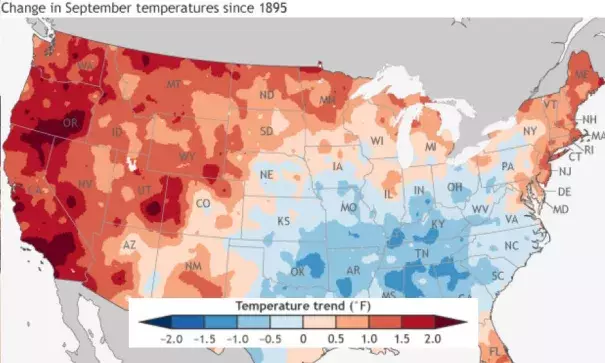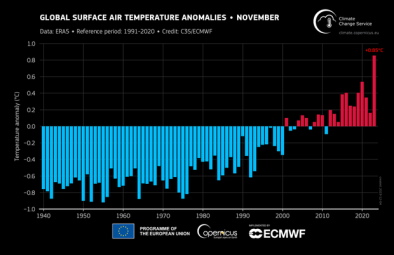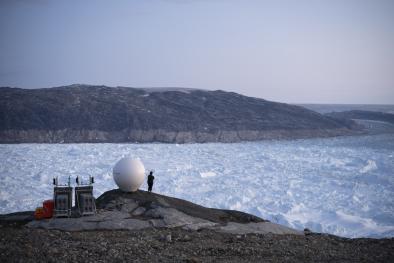How is September climate changing in the U.S.?

Climate scientists are often asked how global warming can be real if every spot on Earth isn’t warming in every season. The simple answer is just math. It doesn’t have to be warming everywhere: the warming just has to overpower the cooling. (The answer to why different places and seasons warm at different rates is, as you’d expect, a bit more complicated.)
A map of temperature change in September in the contiguous United States is an example of this mathematical reality. (Alaska isn’t included because its data record doesn’t go all the way back to the nineteenth century). Over the years from 1895–2017, much of the western United States has warmed more than 1 degree Fahrenheit in September (orange and red colors dominate west of the Rockies.) Meanwhile, much of the Southern Plains, Mississippi Valley, and the Deep South have cooled. The cooling in the East is likely the result of another September trend: more precipitation.
...
When we average over the whole country, the magnitude and footprint (total area) of the warming out West and in the Northeast combine to outweigh the cooling in the South, so the overall trend in U.S. temperatures in September is slightly upward—0.86 degrees Fahrenheit per century. When we average over all months of fall (September-November), the U.S warming trend increases to 1.16 degrees F per decade. When we examine data over a whole year, it rises to 1.51 degrees F per century.
Related Content






